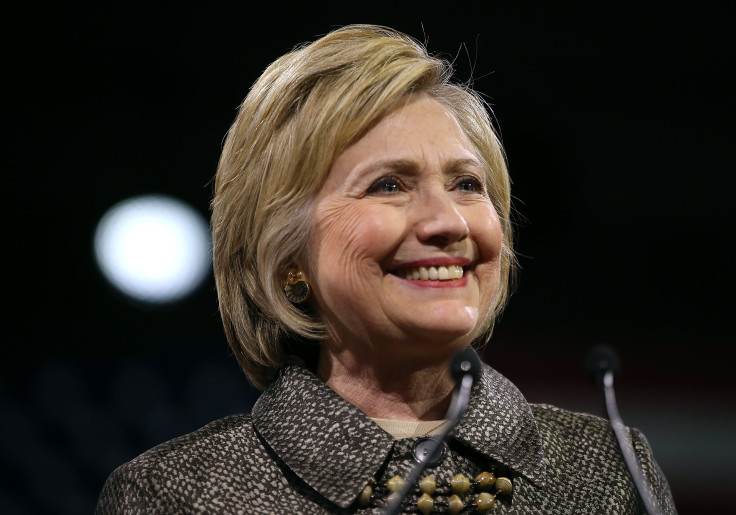Donald Trump’s Tax Plan vs. Hillary Clinton’s Policy: How Would Your Paycheck Be Affected?

Both Republicans and Democrats consider the economy the No. 1 issue in this year’s presidential election. It was an important topic in Thursday night’s Republican debate, and could be a deciding factor for many voters as the rest of the campaign unfolds.
A recent Gallup poll indicated Republicans are more likely to focus on the federal budget deficit whereas Democrats express greater concern over income inequality and employment. Regardless of political leanings, economic progress after the election may be directly impacted by the candidate’s proposed tax plan. Actually enacting changes to the tax code requires support from Congress, something that may not be easy to get. Still, much can be gleaned about a candidate by analyzing the priorities outlined in a proposed tax plan.
Among the presidential candidates, tax plans vary widely. “Republicans don’t want to raise taxes on anyone, and Democrats have boxed themselves into only raising taxes on a small number of wealthy people,” said Alan Cole, an economist at the Tax Foundation’s Center for Federal Tax Policy.
Taxpayers provide the funding for government programs ranging from healthcare to defense to education. Individual income taxes account for the greatest source of revenue for the U.S. government, bringing in nearly 1.4 trillion dollars in 2014. Payroll taxes, which cover Social Security and Medicare, added $1 trillion more to the budget in 2014.
Russell Garofalo, founder and president of the tax preparation firm Brass Taxes, has noticed many of his client meetings end in political discussions. “I would say 98 percent of my clients vote Democrat, but then this is the time of year when you pay for it,” he said. For the past few years, he has offered a $25 discount to clients willing to participate in the political process by calling their representatives about a policy matter of their choice. Garofalo says about two-thirds of clients take him up on the offer.
Choosing which presidential candidate to support can have a lasting impact on the American economy as well as your future paycheck. Comparing Donald Trump’s tax plan to Hillary Clinton’s, the two leading candidates, reveals stark differences. Here’s how your take-home pay could be affected if one of them winds up in the Oval Office.
Donald Trump’s Tax Plan
Love him or hate him, Trump wants to make your paycheck bigger. His tax plan would increase take-home pay for all Americans by significantly cutting taxes. This is true for all Americans regardless of income level, but unsurprisingly the ones who would benefit most are the wealthiest.
“Not only does Trump have that 0 percent rate up to $50,000 for couples, but then it’s only 10 percent up to $100,000 for couples, and then only 20 percent up to $300,000,” Cole said. “So, that’s a much, much gentler climb in the tax brackets than the middle class is currently experiencing.”
Currently, a married couple earning $75,000 a year would find themselves in the 25 percent tax bracket. Under Trump’s tax plan, they could see an increase in each paycheck of more than $100, or as much as $3,000 per year. A married couple earning a combined income of $300,000 could see an increase of about $500 per paycheck, or approximately $12,000 per year.
Of course, reducing taxes comes at a cost. An analysis of Trump’s tax plan by the Tax Policy Center found his tax cuts would result in a federal deficit of $9.5 trillion in the next decade. That’s a significant increase from the projected 2016 federal deficit of $544 billion.
Hillary Clinton’s Tax Plan
If Donald Trump’s tax plan cuts taxes across the board, especially for wealthy Americans, Hillary Clinton’s tax plan does exactly the opposite. “High income people would pay higher taxes, and middle income people, according to the stuff she’s already announced, wouldn’t be affected very much,” said Len Burman, director of the Urban-Brookings Tax Policy Center at the Urban Institute.
Those most affected by Clinton’s tax plan would be Americans who make seven-figures or more. Clinton’s proposal includes the so-called Buffett tax, which requires taxpayers who earn more than a $1 million each year to pay a minimum of 30 percent in taxes.
“She also has a 4 percent surtax on very high income people, those with AGI [adjusted gross income] over $5 million,” Burman said. “It’s not going to affect very many people but for very high income people it would be a significant tax increase.”
By keeping taxes largely the same for most Americans, Clinton’s plan would reduce the federal deficit by approximately $1.2 trillion in the next decade while still funding many government programs, the Tax Policy Center reported. Offsetting the tax cuts outlined in Trump’s tax plan would require significant reductions in federal spending.
“You have to think about the policy implications of these things, which could be a lot more important than whatever the direct implication is for your own checkbook,” Burman said. “You have to make a judgment as to who is the best leader, and who is going to reflect American values and won’t bankrupt us.”
© Copyright IBTimes 2024. All rights reserved.





















